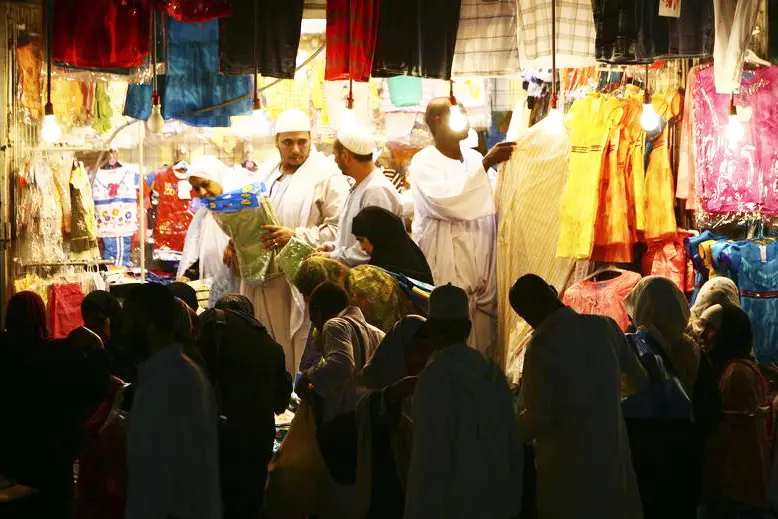PHOTO
02 July 2015
JEDDAH - Saudi Arabia is the second largest retail market in the Gulf Cooperation Council (GCC) after the United Arab Emirates (UAE) with estimated sales of USD 98 billion in 2011. The major factors fuelling the growth of the retail industry in the kingdom are the increasing consumers' disposable income, high marginal propensity to consume, increasing growth rate of the GDP, and government spending. In addition, the country's favorable demographic attributes make it one of the youngest and fastest expanding consumer groups in the world.
Ranked 16th in the global retail market, the retail industry in Saudi Arabia is predominantly run by family-owned businesses, which occupy exclusive franchising rights from international suppliers and brands to organize retail outlets in malls and shopping centers. Riyadh and Jeddah are the two largest cities in the country and house about 60 malls constituting a bulk of the retail sector.
The retail industry segments are broadly classified into non-food and food sales. A large young population with a strong female consumer base is driving the market for non-food products including apparel, cosmetics, and consumer electronics among the highest selling ones.
The retail industry in the KSA is very competitive with the strong presence of some major retail giants like Carrefour Saudi Arabia or Saudi Hypermarket Company LLC, Panda Supermarket, Domino's Pizza, Starbucks, etc. dominating the food segment and Alhokair Fashion Retail, Landmark Group, Jarir Marketing Company, etc. leading the non-food segments. Mergers and acquisitions (M&A), limited yet sustaining growth of online retail, and the preference for big-box format are the key market trends of the retail market in the KSA. Although online retail is at a very nascent stage, it is still an upcoming trend in the KSA retail sector.
Thus, the retail sector in Saudi Arabia is believed to be a high-potential market for domestic as well as for foreign participants. More than 12 million religious pilgrims visit Makkah and Madinah every year, further driving the retail market of the country.
Although, Saudi Arabia has a large retail industry, the market demand for consumer goods in the country is still around 50 percent lesser than the UAE retail market and the market was valued at around $31.1 billion in 2011 and is growing continuously over the last couple of years.
"Saudi Arabia has witnessed a steep GDP growth even during the global financial crisis and this growth has positively impacted the unemployment rate in the country, consequently increasing average disposable incomes for the people," said Deepa Doraiswamy, Associate Director, Innovation and Knowledge Center, Frost & Sullivan. "This factor, along with the increase in the number of new shopping malls being constructed and the expanding expat population, is augmenting the growth of the retail industry in Saudi Arabia."
A few other factors boosting the retail industry are the steadily expanding population base of brand-conscious consumers, the increasing per capita income, expansion of organized retail formats, and a strong non-grocery growth due to higher consumer incomes.
Currently, Saudi Arabia is facing a great challenge due to scarcity of human resources owing to high attrition rates. In addition, high rental rates in the top-tier malls deter the growth of the retail market. Availability of substitute products and expensive e-commerce transactions are some of the other deterrents faced by the retail sector in the country.
"A few other critical factors challenging the retail industry are food manufacturers' high dependency on imports, the price-conscious Saudi consumers compared to their counterparts in the UAE, Kuwait or Qatar, and the private sector's dependency on the expatriate labor force," Doraiswamy noted.
JEDDAH - Saudi Arabia is the second largest retail market in the Gulf Cooperation Council (GCC) after the United Arab Emirates (UAE) with estimated sales of USD 98 billion in 2011. The major factors fuelling the growth of the retail industry in the kingdom are the increasing consumers' disposable income, high marginal propensity to consume, increasing growth rate of the GDP, and government spending. In addition, the country's favorable demographic attributes make it one of the youngest and fastest expanding consumer groups in the world.
Ranked 16th in the global retail market, the retail industry in Saudi Arabia is predominantly run by family-owned businesses, which occupy exclusive franchising rights from international suppliers and brands to organize retail outlets in malls and shopping centers. Riyadh and Jeddah are the two largest cities in the country and house about 60 malls constituting a bulk of the retail sector.
The retail industry segments are broadly classified into non-food and food sales. A large young population with a strong female consumer base is driving the market for non-food products including apparel, cosmetics, and consumer electronics among the highest selling ones.
The retail industry in the KSA is very competitive with the strong presence of some major retail giants like Carrefour Saudi Arabia or Saudi Hypermarket Company LLC, Panda Supermarket, Domino's Pizza, Starbucks, etc. dominating the food segment and Alhokair Fashion Retail, Landmark Group, Jarir Marketing Company, etc. leading the non-food segments. Mergers and acquisitions (M&A), limited yet sustaining growth of online retail, and the preference for big-box format are the key market trends of the retail market in the KSA. Although online retail is at a very nascent stage, it is still an upcoming trend in the KSA retail sector.
Thus, the retail sector in Saudi Arabia is believed to be a high-potential market for domestic as well as for foreign participants. More than 12 million religious pilgrims visit Makkah and Madinah every year, further driving the retail market of the country.
Although, Saudi Arabia has a large retail industry, the market demand for consumer goods in the country is still around 50 percent lesser than the UAE retail market and the market was valued at around $31.1 billion in 2011 and is growing continuously over the last couple of years.
"Saudi Arabia has witnessed a steep GDP growth even during the global financial crisis and this growth has positively impacted the unemployment rate in the country, consequently increasing average disposable incomes for the people," said Deepa Doraiswamy, Associate Director, Innovation and Knowledge Center, Frost & Sullivan. "This factor, along with the increase in the number of new shopping malls being constructed and the expanding expat population, is augmenting the growth of the retail industry in Saudi Arabia."
A few other factors boosting the retail industry are the steadily expanding population base of brand-conscious consumers, the increasing per capita income, expansion of organized retail formats, and a strong non-grocery growth due to higher consumer incomes.
Currently, Saudi Arabia is facing a great challenge due to scarcity of human resources owing to high attrition rates. In addition, high rental rates in the top-tier malls deter the growth of the retail market. Availability of substitute products and expensive e-commerce transactions are some of the other deterrents faced by the retail sector in the country.
"A few other critical factors challenging the retail industry are food manufacturers' high dependency on imports, the price-conscious Saudi consumers compared to their counterparts in the UAE, Kuwait or Qatar, and the private sector's dependency on the expatriate labor force," Doraiswamy noted.
© The Saudi Gazette 2015












